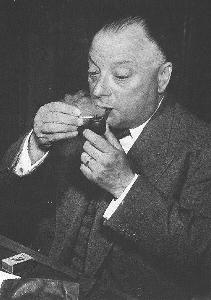
Wolfgang Pauli (1900-1958), Austrian physicist who won the Physics Nobel price for his idea of the exclusion principle: two electrons, and more generally two fermions, cannot have the same quantum state (position, momentum, mass, spin)
The Pauli exclusion principle is an assertion that no two electrons in an atom can be at the same time in the same state or configuration, proposed (1925) by the Austrian physicist Wolfgang Pauli to account for the observed patterns of light emission from atoms. The exclusion principle subsequently has been generalized to include a whole class of particles of which the electron is only one member.

Wolfgang Pauli (1900-1958), Austrian physicist who won the Physics Nobel price for his idea of the exclusion principle: two electrons, and more generally two fermions, cannot have the same quantum state (position, momentum, mass, spin)
Particles obeying the exclusion principle have a characteristic value of spin, or intrinsic angular momentum; their spin is always some odd whole-number multiple of one-half. In the modern view of atoms, the space surrounding the dense nucleus may be thought of as consisting of orbitals, or regions, each of which comprises only two distinct states. The Pauli exclusion principle indicates that, if one of these states is occupied by an electron of spin one-half, the other may be occupied only by an electron of opposite spin, or spin negative one-half. An orbital occupied by a pair of electrons of opposite spin is filled: no more electrons may enter it until one of the pair vacates the orbital. An alternative version of the exclusion principle as applied to atomic electrons states that no two electrons can have the same values of all four quantum numbers.
Excerpt from the Encyclopedia Britannica without permission.